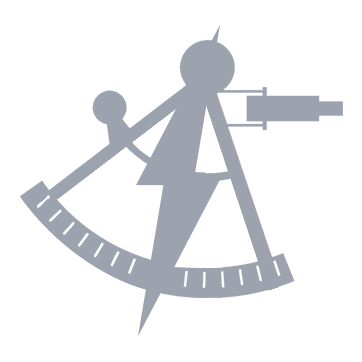First Officer’s Log, Stardate 2400.11. Supplemental. — I have assembled an away team consisting of myself, Lieutenant Commander Tabe, Lieutenant Lourde, Midshipman Blair, and Crewmen Park and Lee to transport over to Relay Station R-D-G3. Our mission is to find and disable whatever is causing the interference that is keeping us here. Since the Anthony is facing down more hostile vessels, I’ve left behind our security chief, so let’s hope we don’t run into any trouble.
Adir Goodman was no stranger to complex missions, but the sheer number of threats to keep track of during this one took the cake. They had just successfully fended off a Hirogen attack, and now they were faced with three more Hazari ships and a mysterious energy formation to deal with. The two security crewmen he had summoned, Park and Lee, were waiting for the bridge officers in the transporter room, where they were getting a masterclass in successfully attaching their utility belts from the head of transporter operations, Master Chief Stepanek. As old guard as they came, Goodman walked in right as the senior enlisted member was regaling the two green crewmen about his time spent during the Dominion War on the Tangiers as a supply technician.
“—And as you can imagine, getting any sort of supplies during the War was difficult, with replicator power at a premium. But we made do,” the master chief was saying.
“Uphill, both ways, huh, Master Chief,” Goodman teased.
Goodman had quickly learned the lesson that despite standard Starfleet practice of just calling any of the three grades of chief petty officer simply “Chief,” Stepanek would make a fuss if he was ever anything less than “Master Chief.” Said Master Chief glowered slightly at the first officer’s mockery, but just nodded and stepped back up to his transporter platform while Goodman, Tabe, and Blair got their own utility belts on. The timing on this mission would be tight, and Goodman hoped that it wouldn’t be too much of a baptism of fire for Midshipman Blair’s first mission, but the young man had been available and in need of a job when Goodman left the bridge.
“Stick close to me, Blair. I want you to—” Goodman started but was cut off when the door to the corridor opened, and he was immediately greeted by the sound of Lieutenant Mahiri Lourde’s fast-talking tenor.
“Sorry I’m late, Commander. I was just pulling the sensor data from the main computer. I’ve never seen anything like this before. Edrun might be better suited to this, but I suppose if we do get a blood dilithium incursion, that wouldn’t be ideal at all, given that he’s a telepath and all,” the science officer chattered as she went over to grab her own equipment.
“Blair, run secondary tricorder scans while the lieutenant focuses on analysis,” Goodman finished. The young man nodded nervously and reflexively grabbed the type-2 phaser on his belt to make sure it was still there. “Tabe, get whatever data you can from the station’s main computer,” he added.
“Understood. If the Hazari were smart, they wouldn’t have left much for us,” Tabe replied.
“I think with the Hazari, you have to pay for the deluxe package to get a service like that,” Lourde said, immediately laughing at her own joke. “I was listening from the science lab. I wonder if the Hirogen were briefed that the Hazari were part of this, or if it was a double-blind experiment, so to speak.”
Goodman pondered that for a moment and then shook his head. “An interesting question, but we need to focus on shutting down whatever’s over there before we end up with a much bigger problem on our hands,” he said, trying to sound stern while also acknowledging the lieutenant’s perspective. He stepped up onto the transporter pad. “How is our landing site looking, Chief— err… Master Chief?” he asked, pinching the bridge of his nose as he corrected himself.
Stepanek indulged in a scoff but then recentered himself. “No life signs detected, and the station’s environmental controls appear to be operating normally. All of the station’s internal and external defenses are offline.”
“Good. Keep a lock on us, and we’ll be in and out before the Hazari get here,” Goodman replied. He waited until all of the away team members were up on the transporter pad. “Energize, please.”
Goodman and his away team materialized in the center of the gleaming command center of Relay Station R-D-G3—or what would have been a gleaming command center in normal times. These stations were almost important as waystations to welcome new species to the Federation as they were as communications hubs, and so it was a little dismaying to see the Federation flag hanging by only one hook above the master console.
“Confirming no life signs,” Lourde reported. “But I am picking up evidence that polaron weapons were used here, as well as molecular-level remains of the station’s four crewmembers,” she added, her normal bubbly demeanor gone.
While Goodman knew there weren’t any lifesigns aboard the station, hearing that the crew were definitively dead hit him in the stomach like a battering ram. He didn’t know the people who served there, but they deserved better than being slaughtered while doing their jobs.
“Polaron weapons would indicate the Hazari,” Tabe said, sighing. “I guess this was a ‘no witnesses’ contract.”
“Computer, perform a systems diagnostic,” Goodman ordered.
“There is insufficient power to complete that request,” the computer reported.
“Why is there insufficient power?”
“There is insufficient power to answer that question.”
The commander groaned. “Stupid thing. Tabe, figure out what’s going on here,” he ordered, prompting the Bajoran lieutenant commander to sit down at one of the control stations to start digging.
“Sir, I’m detecting a massive energy source in the compartment under this room that doesn’t match this station’s fusion generator signature,” Lourde reported.
“Lee and Park, stay with Tabe. Blair and Lourde with me to check this out,” Goodman replied before leading half of his team through the large utility doors that separated the command center from the station’s main stairwell. There were blast points all along the bulkheads and a smear of blue blood on one of the directional signs leading to the engineering compartment. The doors had been sealed shut with an energy weapon, as evidenced by a rough seam. “These are made of duranium. Is there another way in?”
“Checking the schematics, Commander,” Blair offered as he swiped through his tricorder. He turned to the bulkhead and felt around for a moment before releasing the concealed catch on a panel covering a Jefferies tube entrance. “This tube wraps around to the far side of the engineering bay. It’s quite the crawl, though.”
“Let’s get this over with, then,” Goodman said.
The commander took point, crawling on his hands and knees through the cramped utility tunnel until they got all the way around to the back side of the station’s engineering bay, a ten-minute journey that left all three of them with imprints of the deck plating on their palms. Thankfully, the hatch they found there was unsealed, and Goodman just had to kick the panel off with his feet to gain access.
“What is that?” the commander exclaimed as his team examined a large device that was intertwined with the power cables coming off of the fusion reactor.
It was a massive sphere swirling with dark red energy inside, and Goodman instantly got a feeling of malevolence from it. The energy seemed to be, for lack of a better term, quiet or dormant, as if it were waiting for something. It gave off the impression that it was capable of doing much worse than it was doing at the moment and Goodman did not like that one bit.
Back in the control room, Tabe came to the conclusion that the station’s power was being shunted into a set of capacitors attached to an unknown device in the engineering section about twenty seconds after Goodman and the other half of their team found it. He’d managed to interface the power cell of his phaser into the station’s diagnostic computer to get a bare minimum picture of what was happening. Starfleet systems were usually pretty trusting, and so the station’s computer was happy to provide him with a basic schematic: whatever the large device was, it was drawing power from the station’s primary fusion reactor and then was interfaced directly with the two large communication antennae, which explained how it was able to distribute a subspace field. What Tabe did not realize until it was far too late was that there was another system drawing a tremendous amount of power: the transporters.
Midshipman Blair was entranced by the device in the engineering bay. It was eerily beautiful and alien. Lourde and Goodman were deep in conversation about how it might function, though Blair could tell that Goodman was going around in circles a little with his questions. He was pretty, but he definitely wasn’t a deep thinker, let alone a scientist, which was a pity.
“I think I can get better readings from a little closer,” Blair said, stepping a few meters toward the device before either of his superiors could react.
When the midshipman’s boots crossed an invisible line on the floor, the station’s fusion reactor kicked into high gear, and the mysterious device began to pulse before there was a flash of red light. The last thing Blair felt before blacking out was Goodman grabbing him in a bear hug and pushing him down to the deck. On the exterior of the station, a half dozen pods containing glowing-red blood dilithium materialized and then magnetized themselves to the hull. A second transporter cycle left more near to the device in engineering. As power poured through the device, the subspace inversion field got stronger and stronger, until formations of blood dilithium began to emerge from subspace on, in, and around the station, turning it from a symbol of peace into a well of blood.

 Bravo Fleet
Bravo Fleet








